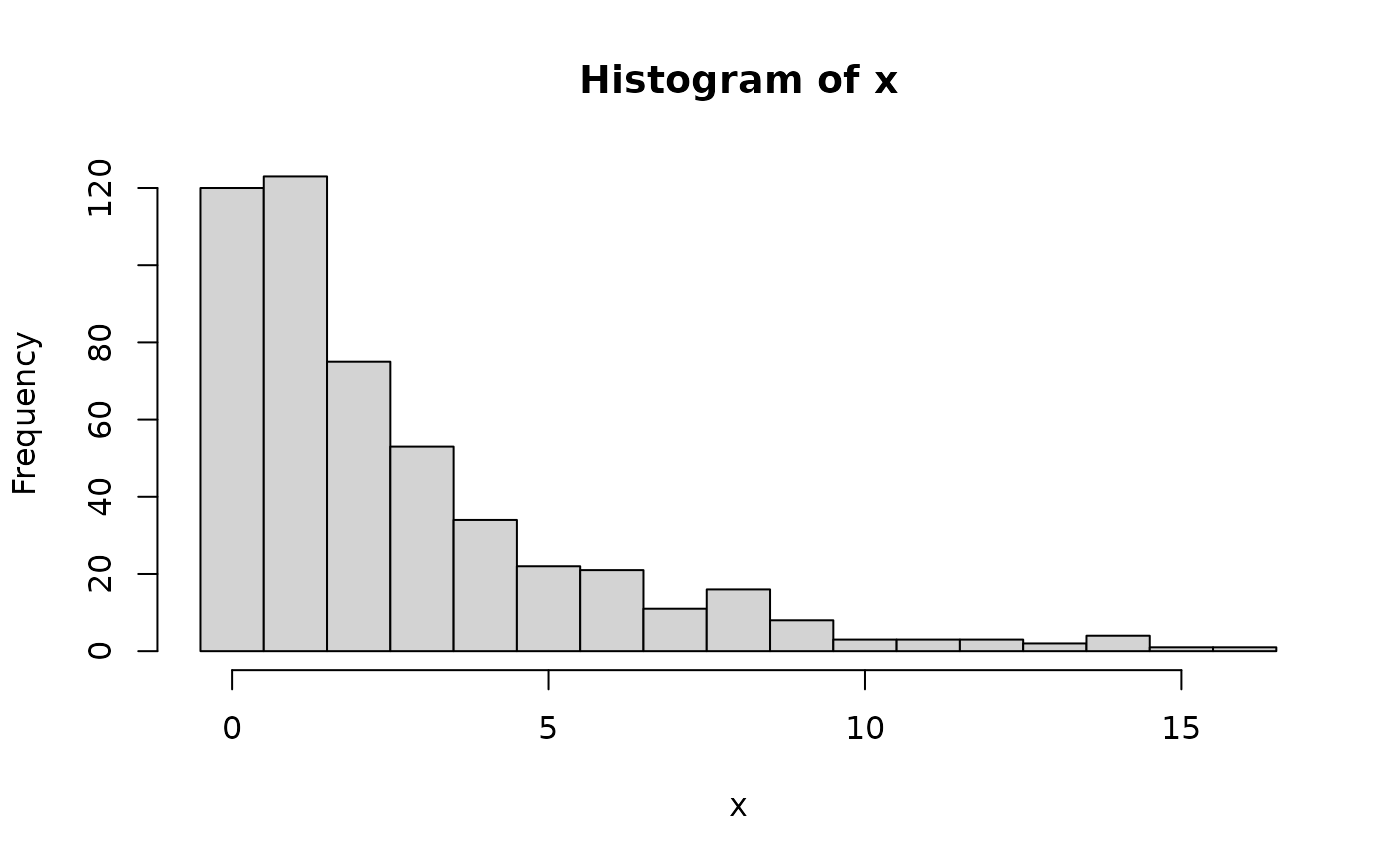Draw a random sample from a hurdle negative binomial distribution
Source:R/HurdleNegativeBinomial.R
random.HurdleNegativeBinomial.RdDraw a random sample from a hurdle negative binomial distribution
Usage
# S3 method for class 'HurdleNegativeBinomial'
random(x, n = 1L, drop = TRUE, ...)Arguments
- x
A
HurdleNegativeBinomialobject created by a call toHurdleNegativeBinomial().- n
The number of samples to draw. Defaults to
1L.- drop
logical. Should the result be simplified to a vector if possible?
- ...
Unused. Unevaluated arguments will generate a warning to catch mispellings or other possible errors.
Value
In case of a single distribution object or n = 1, either a numeric
vector of length n (if drop = TRUE, default) or a matrix with n columns
(if drop = FALSE).
Examples
## set up a hurdle negative binomial distribution
X <- HurdleNegativeBinomial(mu = 2.5, theta = 1, pi = 0.75)
X
#> [1] "HurdleNegativeBinomial(mu = 2.5, theta = 1, pi = 0.75)"
## standard functions
pdf(X, 0:8)
#> [1] 0.25000000 0.21428571 0.15306122 0.10932945 0.07809246 0.05578033 0.03984309
#> [8] 0.02845935 0.02032811
cdf(X, 0:8)
#> [1] 0.2500000 0.4642857 0.6173469 0.7266764 0.8047688 0.8605492 0.9003923
#> [8] 0.9288516 0.9491797
quantile(X, seq(0, 1, by = 0.25))
#> [1] 0 0 2 4 Inf
## cdf() and quantile() are inverses for each other
quantile(X, cdf(X, 3))
#> [1] 3
## density visualization
plot(0:8, pdf(X, 0:8), type = "h", lwd = 2)
 ## corresponding sample with histogram of empirical frequencies
set.seed(0)
x <- random(X, 500)
hist(x, breaks = -1:max(x) + 0.5)
## corresponding sample with histogram of empirical frequencies
set.seed(0)
x <- random(X, 500)
hist(x, breaks = -1:max(x) + 0.5)
